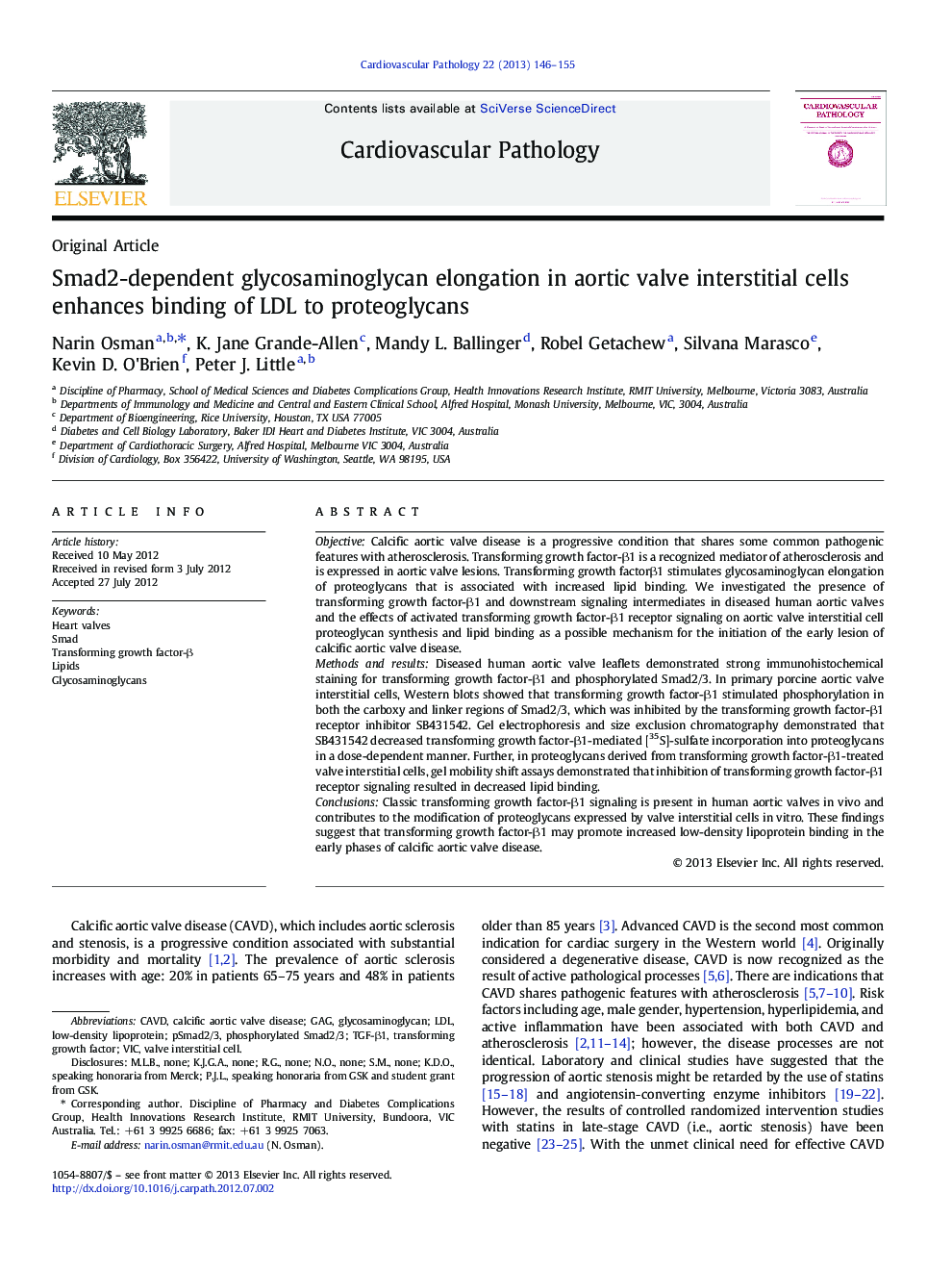| کد مقاله | کد نشریه | سال انتشار | مقاله انگلیسی | نسخه تمام متن |
|---|---|---|---|---|
| 2898657 | 1173091 | 2013 | 10 صفحه PDF | دانلود رایگان |

ObjectiveCalcific aortic valve disease is a progressive condition that shares some common pathogenic features with atherosclerosis. Transforming growth factor-β1 is a recognized mediator of atherosclerosis and is expressed in aortic valve lesions. Transforming growth factorβ1 stimulates glycosaminoglycan elongation of proteoglycans that is associated with increased lipid binding. We investigated the presence of transforming growth factor-β1 and downstream signaling intermediates in diseased human aortic valves and the effects of activated transforming growth factor-β1 receptor signaling on aortic valve interstitial cell proteoglycan synthesis and lipid binding as a possible mechanism for the initiation of the early lesion of calcific aortic valve disease.Methods and resultsDiseased human aortic valve leaflets demonstrated strong immunohistochemical staining for transforming growth factor-β1 and phosphorylated Smad2/3. In primary porcine aortic valve interstitial cells, Western blots showed that transforming growth factor-β1 stimulated phosphorylation in both the carboxy and linker regions of Smad2/3, which was inhibited by the transforming growth factor-β1 receptor inhibitor SB431542. Gel electrophoresis and size exclusion chromatography demonstrated that SB431542 decreased transforming growth factor-β1-mediated [35S]-sulfate incorporation into proteoglycans in a dose-dependent manner. Further, in proteoglycans derived from transforming growth factor-β1-treated valve interstitial cells, gel mobility shift assays demonstrated that inhibition of transforming growth factor-β1 receptor signaling resulted in decreased lipid binding.ConclusionsClassic transforming growth factor-β1 signaling is present in human aortic valves in vivo and contributes to the modification of proteoglycans expressed by valve interstitial cells in vitro. These findings suggest that transforming growth factor-β1 may promote increased low-density lipoprotein binding in the early phases of calcific aortic valve disease.
Journal: Cardiovascular Pathology - Volume 22, Issue 2, March–April 2013, Pages 146–155